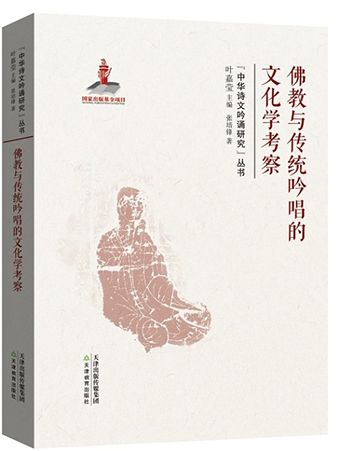Exploring Chinese culture in the Western Region

Connecting Buddhism and the Recital Tradition
A part of China’s more than 3,000 years of traditional culture, the recital tradition emphasizes the recital of poems and the Confucian classics in rhyme, and it is different from simply reading aloud. Connecting Buddhism and the Recital Tradition explores the close relationship between Mahayana Buddhism and Chinese traditional recital. It points out that one of the sources of traditional recital is the Chinese ritual civilization that is preserved in Mahayana Buddhism. The Western Region was an important point of convergence for Chinese ritual-based civilization and Buddhist culture. The Mahayana Buddhism in the Western Region is the combined product of the Indian Theravada Sarvastivada school and Chinese culture.
In this book, an important concept of “cultural return” appears: when the first collapse of ritual appeared in the Spring and Autumn Period (770–221BC), the Chinese ritual-based civilization flowed to the Western Region; when the second collapse of ritual appeared in the Eastern Han Dynasty (25–220), the ancient rituals were passed back to the Central Plains with the introduction of Buddhism and the rise of Taoism as well. It can be said that through the lens of this new perspective on Buddhism and recital, the relationship between Chinese culture and the culture of the Western Region can be re-examined.
According to the archaeological results of recent years cited in the book, the musical instruments such as bells, drums and rings of the Central Plains in the Pre-Qin period (prior to 221BC) were introduced into the Western Region. This means that the system of Chinese rituals was already spreading in the Western Region at that time. From the perspective of Buddhist recital, Mahayana Buddhism in the Western Region changed the situation in which the recital of Buddhist chants was forbidden by the Theravada Buddhism classics and precepts. This change was likely to result from external factors—largely from the Taoist school from the Han ethnicity, which belonged to the Chinese ritual-based civilization.
Buddhism was very popular in the Western Region during the Han and Tang dynasties. As a representative culture of the Western Region, Madhyamika of Mahayana is very different from Theravada Buddhism and the Yogacara school of Mahayana Buddhism, which are both popular in India. Rather, it is highly compatible with the Chinese ritual civilization in many respects. Madhyamika of Mahayana,which was introduced to China during the Eastern Han Dynasty, has the same origin with the Chinese civilization to a certain extent. In other words, the Western Region culture was not a one-way export into the Chinese culture, and the influence of the Chinese culture on its early stages cannot be ignored.
edited by YANG LANLAN
